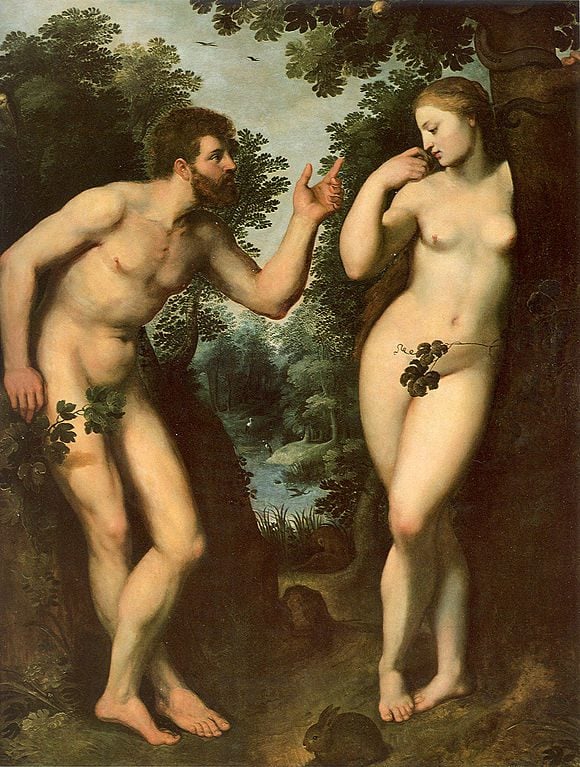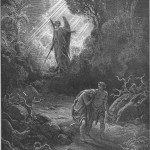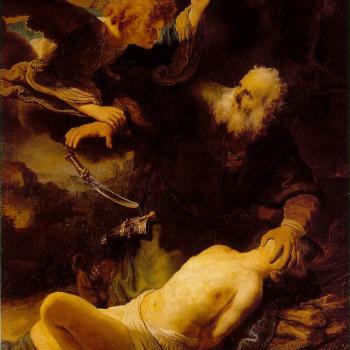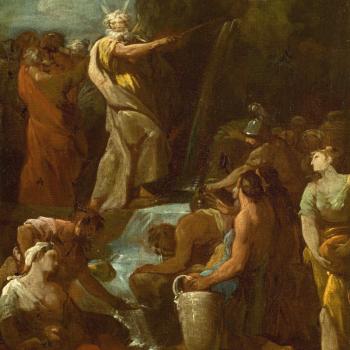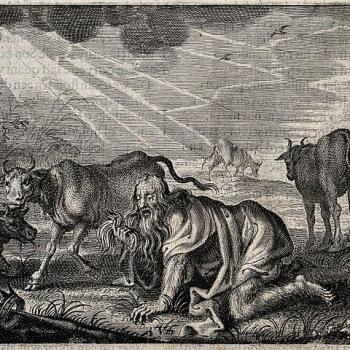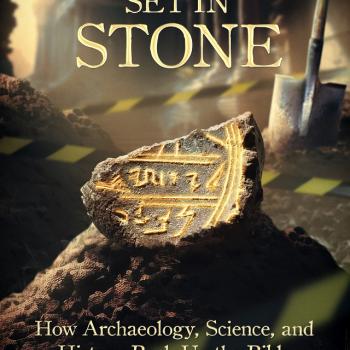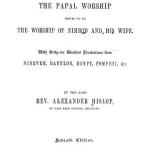Ven. Pope Pius XII’s encyclical, Humani Generis (12 August 1950) was designed (in the subtitle) to counter “some false opinions threatening to undermine the foundations of Catholic doctrine”:
37. When, however, there is question of another conjectural opinion, namely polygenism, the children of the Church by no means enjoy such liberty. For the faithful cannot embrace that opinion which maintains that either after Adam there existed on this earth true men who did not take their origin through natural generation from him as from the first parent of all, or that Adam represents a certain number of first parents. Now it is in no way apparent how such an opinion can be reconciled with that which the sources of revealed truth and the documents of the Teaching Authority of the Church propose with regard to original sin, which proceeds from a sin actually committed by an individual Adam and which, through generation, is passed on to all and is in everyone as his own.[12]*38. Just as in the biological and anthropological sciences, so also in the historical sciences there are those who boldly transgress the limits and safeguards established by the Church. In a particular way must be deplored a certain too free interpretation of the historical books of the Old Testament. Those who favor this system, in order to defend their cause, wrongly refer to the Letter which was sent not long ago to the Archbishop of Paris by the Pontifical Commission on Biblical Studies.[13] This letter, in fact, clearly points out that the first eleven chapters of Genesis, although properly speaking not conforming to the historical method used by the best Greek and Latin writers or by competent authors of our time, do nevertheless pertain to history in a true sense, which however must be further studied and determined by exegetes; the same chapters, (the Letter points out), in simple and metaphorical language adapted to the mentality of a people but little cultured, both state the principal truths which are fundamental for our salvation, and also give a popular description of the origin of the human race and the chosen people. If, however, the ancient sacred writers have taken anything from popular narrations (and this may be conceded), it must never be forgotten that they did so with the help of divine inspiration, through which they were rendered immune from any error in selecting and evaluating those documents.*39. Therefore, whatever of the popular narrations have been inserted into the Sacred Scriptures must in no way be considered on a par with myths or other such things, which are more the product of an extravagant imagination than of that striving for truth and simplicity which in the Sacred Books, also of the Old Testament, is so apparent that our ancient sacred writers must be admitted to be clearly superior to the ancient profane writers.
Here is what St. Paul stated about the historical Adam and original sin:
Romans 5:12-19 (RSV) Therefore as sin came into the world through one man and death through sin, and so death spread to all men because all men sinned — [13] sin indeed was in the world before the law was given, but sin is not counted where there is no law. [14] Yet death reigned from Adam to Moses, even over those whose sins were not like the transgression of Adam, who was a type of the one who was to come. [15] But the free gift is not like the trespass. For if many died through one man’s trespass, much more have the grace of God and the free gift in the grace of that one man Jesus Christ abounded for many. [16] And the free gift is not like the effect of that one man’s sin. For the judgment following one trespass brought condemnation, but the free gift following many trespasses brings justification. [17] If, because of one man’s trespass, death reigned through that one man, much more will those who receive the abundance of grace and the free gift of righteousness reign in life through the one man Jesus Christ. [18] Then as one man’s trespass led to condemnation for all men, so one man’s act of righteousness leads to acquittal and life for all men.[19] For as by one man’s disobedience many were made sinners, so by one man’s obedience many will be made righteous.
1 Corinthians 15:21-22 For as by a man came death, by a man has come also the resurrection of the dead. [22] For as in Adam all die, so also in Christ shall all be made alive.
1 Corinthians 15:45-49 Thus it is written, “The first man Adam became a living being”; the last Adam became a life-giving spirit. [46] But it is not the spiritual which is first but the physical, and then the spiritual. [47] The first man was from the earth, a man of dust; the second man is from heaven. [48] As was the man of dust, so are those who are of the dust; and as is the man of heaven, so are those who are of heaven. [49] Just as we have borne the image of the man of dust, we shall also bear the image of the man of heaven.
The erroneous view of a non-literal, non-historical Adam is also contrary to the understanding of the Blessed Virgin Mary as the second Eve: a motif very common in the Church fathers and in Catholic Mariology ever since their time. If there wasn’t a literal Eve who said “no” to God, then by analogy there would be no literal Mary who said “yes” and made redemption possible, in terms of being the Mother of (the incarnate) God (the Son).
Therefore, just as the Pauline analogy of Adam and second Adam (Christ) requires a literal understanding, so does the Eve-Mary analogy. Just as there was a literal Adam who really fell (and the human race with him (Rom 5:15; 1 Cor 15:22), thus requiring the redemption of Christ, so there was a real historical Eve who said “no” to God, and hence by analogy, a real Mary who said yes and led the way to redemption by being the Mother of (the incarnate) God.
Fr. John A. Hardon, S. J., the renowned catechist and candidate for possible sainthood, who was also my own mentor, wrote in his Modern Catholic Dictionary, about Adam:
The first man. Created in the image of God. His wife was Eve and his sons Cain, Abel, and Seth. They lived in the garden of Eden but were expelled because Adam and Eve disobeyed God’s command not to eat the fruit of a certain tree (Genesis 1,2). In early accounts of Adam’s life he is referred to, not by a specific name, but “the man” (Genesis 3). Not until his descendants were given (Genesis 4:25) was the proper noun “Adam” applied to him. Many doctrines in the New Testament are traced back to the life of the first man, notably original sin and the concept of Jesus as the second Adam bringing redemption to the human race.
He stated in the same work about original sin:
Either the sin committed by Adam as the head of the human race, or the sin he passed onto his posterity with which every human being, with the certain exception of Christ and his Mother, is conceived and born. The sin of Adam is called originating original sin (originale originans); that of his descendants is originated original sin (originale originatum). Adam’s sin was personal and grave, and it affected human nature. It was personal because he freely committed it; it was grave because God imposed a serious obligation; and it affected the whole human race by depriving his progeny of the supernatural life and preternatural gifts they would have possessed on entering the world had Adam not sinned. Original sin in his descendants is personal only in the sense that the children of Adam are each personally affected, but not personal as though they had voluntarily chosen to commit the sin; it is grave in the sense that it debars a person from the beatific vision, but not grave in condemning one to hell; and it is natural only in that all human nature, except for divine intervention, has it and can have it removed only by supernatural means.
Our Lord Jesus refers quite literally to Abel in Matthew 23:35. The author of Hebrews does the same (11:4; 12:24). St. Paul refers to Eve as having been deceived by the devil, in 2 Corinthians 11:3. I have cited the Catechism of the Catholic Church:
If Adam and Eve are not regarded as actual human beings, and the parents of the human race, then the doctrine of the Fall of man goes down with that, and we are smack dab in the middle of the Pelagian heresy, which holds that man is saved by his own works, and is not in need of being rescued from a fallen condition. The fall is clearly taught in the Bible; especially by St. Paul.
The Catechism refers to Adam and Eve eight times, and ties in their rebellion to the fall of man at least three times (#399, 404, 417).
Cain and Abel are referred to as actual human beings twice, and their actions also connected to original sin.
God made a covenant with Noah. It’s pretty difficult to make a covenant with an imaginary, fictional person. Thus, the Catechism refers to Noah and the flood, and what is called the Noachic Covenant, nine times.
The problem (among many) is that the New Testament certainly accepts the Genesis account as literal, and this person as Adam, and his wife as Eve: precisely as stated. Thus Jesus said:
Matthew 23:34-35 (RSV) Therefore I send you prophets and wise men and scribes, some of whom you will kill and crucify, and some you will scourge in your synagogues and persecute from town to town, that upon you may come all the righteous blood shed on earth, from the blood of innocent Abel to the blood of Zechari’ah the son of Barachi’ah, whom you murdered between the sanctuary and the altar.
How, then, can Abel be an actual historical person, whose blood was shed: one used in an illustration of persecution up to Zechariah the prophet, yet his father be merely a “literary figure” and not the actual historical Adam? St. Paul’s statements and analogies of Adam and Christ, seen above, clearly presuppose the historical Adam of the Genesis accounts and no other.
Moreover, in Pope St. John Paul II’s General Audience of 1 October 1986: “Consequences of Original Sin for All Humanity”, the historical Adam was again asserted, in citing Pope St. Paul VI:
It is evident that the explanations of original sin given by some modern authors will appear to you as irreconcilable with genuine Catholic teaching. Such authors, starting from the unproved premise of polygenism, deny more or less clearly that the sin from which such a mass of evils has derived in humanity, was, above all, the disobedience of Adam ‘the first man,’ figure of that future one, which occurred at the beginning of history.
Related Reading
Practical Matters: Perhaps some of my 3,900+ free online articles (the most comprehensive “one-stop” Catholic apologetics site) or fifty books have helped you (by God’s grace) to decide to become Catholic or to return to the Church, or better understand some doctrines and why we believe them.
Or you may believe my work is worthy to support for the purpose of apologetics and evangelism in general. If so, please seriously consider a much-needed financial contribution. I’m always in need of more funds: especially monthly support. “The laborer is worthy of his wages” (1 Tim 5:18, NKJV). 1 December 2021 was my 20th anniversary as a full-time Catholic apologist, and February 2022 marked the 25th anniversary of my blog.
PayPal donations are the easiest: just send to my email address: apologistdave@gmail.com. You’ll see the term “Catholic Used Book Service”, which is my old side-business. To learn about the different methods of contributing, including 100% tax deduction, etc., see my page: About Catholic Apologist Dave Armstrong / Donation Information. Thanks a million from the bottom of my heart!
***
[originally from 9-23-11; slightly revised on 1-6-22)
Photo credit: Adam and Eve (1597-1600), by Peter Paul Rubens (1577-1640) [public domain / Wikimedia Commons]
***
Summary: The Bible requires taking a literal view. The notion of a non-literal, non-historical Adam is also contrary to the understanding of the Blessed Virgin Mary as the second Eve.


